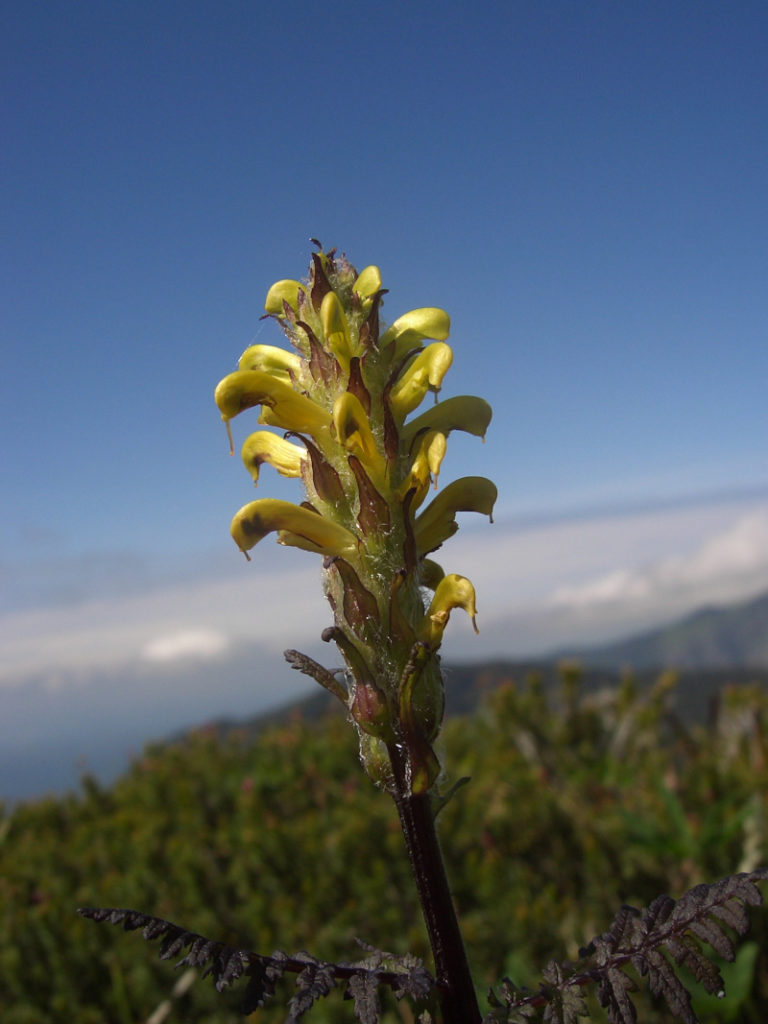Mount Ranier Lousewort Facts
- This delicate marvel of Nature bears the informative, if less than verbally appealing, common name of the Mount Ranier Lousewort. The formal scientific name for this amazing Angiosperm, however, is the tongue-twisting term of Pedicularis rainierensis.
- The beautiful species received its technical name due to the efforts of the American researchers Francis Whittier Pennell and Fred Adelbert Warren. This team of dedicated researchers made the first formal recognition of it as a separate and distinct species.
- For the moment, the IUCN has no listing for the flowering plant. Any such listing would appear on the organizations’ published Red List of Threatened Species. That lack of listing occurs, in part, due to a lack of sufficient information about the plant.
- The government of the region in which it appears, however, does currently have a listing for its status. That governing body presently lists the Mount Ranier Lousewort as Sensitive. It earns that status due to its relative vulnerability to local factors.
- That’s because, in its native range, it’s especially vulnerable to the actions of man. It’s often trampled by campers and hikers, who favor its native area. It’s also vulnerable to grazing by elks and marmots. Many people also collect specimens, due to its appeal.
- This work of evolution nevertheless faces the same dangers as other species throughout the world. These consist of the dual threats of habitat loss and climate change. The nature of its range further augments its vulnerability to both of these factors.
Related Articles
Mount Ranier Lousewort Physical Description
The marvelous Mount Ranier Lousewort possesses several attributes that make it stand out in the minds of those who encounter it. Sheer physical size, however, isn’t among them. That’s due to the fact that, for all its loveliness, this Angiosperm remains small.
More precisely, individual specimens attain a maximum known height of only about 16 in (40.6 cm). Conversely, though, mature plants rarely attain heights measuring less than 6 in (15.25 cm). Most individuals, in fact, measure roughly in the middle of that range.
Each delicate plant typically produces several thin, mainly hairless stalks. Each of these in turn develops several stems, along which its pinnate leaves protrude. These average roughly 2 – 6 in (5 – 15 cm) in length. This foliage further averages about 1.2 in (3 cm) in width.
Each dazzling bloom of the Mount Ranier Lousewort, furthermore, produces its own wonders. These include a short, spike-like raceme atop the stem. These are further surrounded by 5 delicate petals. These features also generally manifest a bright yellow shade.
This work of Nature produces its fruit within relatively small, hairless capsules. These typically develop in a flattened and asymmetrical shape. Most commonly, these structures contain several seeds. Those usually manifest a unique, slightly wing-shaped design.
- Kingdom: Plantae
- Phylum: Angiosperms
- Class: Eudicots
- Order: Lamiales
- Family: Orobanchaceae
- Genus: Pedicularis
- Species: P. ranierensis
Mount Ranier Lousewort Distribution, Habitat, and Ecology
Quite sadly, the gorgeous Mount Ranier Lousewort appears to have evolved as endemic to a highly restricted zone of habitation. In fact, it appears in an extremely tiny section of the globe. That’s a portion of the region now known as the continent of North America.
Yet, even there this wonder of Nature only appears within a very narrow range of the continent. It further makes its home in the northwestern portion of the United States. There, it appears solely on and around the magnificent Mount Ranier, as the name hints at.
It therefore understandably principally inhabits an alpine environment. Smaller percentages of its population, however, make their home in nearby sub-alpine areas. Virtually all known specimens coincidentally appear within the boundaries of the Mount Ranier National Park.
Within that range, however, the plant appears to be moderately adaptible in its choice of specific ecosystems. That’s because across this limited range, it appears in several types of area. These include regions of rocky slopes, coniferous forests, and moist meadows.
These further most frequently themselves appear in close proximity to streams or lake basins. It also seems to require a very specific, and small, range of altitudes. Due to this, all known concentrations appear at altitudes between 4,800 – 6,800 ft (1,400 – 2,100 m).
Mount Ranier Lousewort, however, displays an impressive flexibility in terms of its soil requirements. That’s due to the fact that it performs equally well in different types of soil. These include regions of moist talus, spots of deep loam, and even areas of gravelly slopes.
Species Sharing Its Range
Pygmy Rabbit
Check out our other articles on 3 Intriguing European Islands, Horn Shark, Victoria Falls, Southern Tamandua, Spanish Dancer, Chinese Giant Salamander, American Alligator, Calhan Paint Mines

